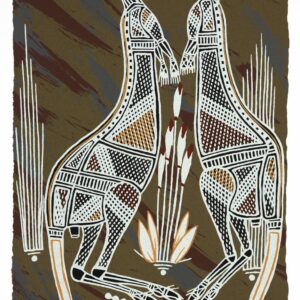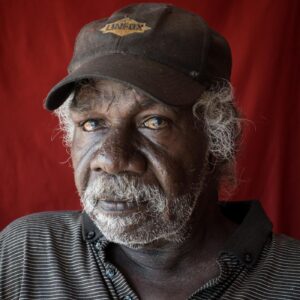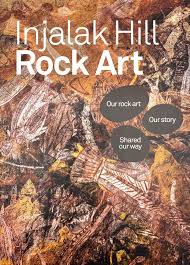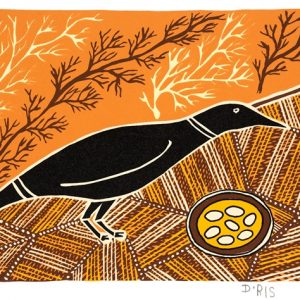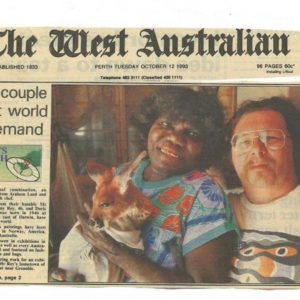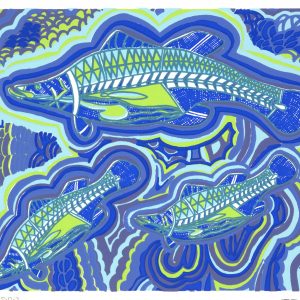Description
- Artist: Ross Yulidjirri
- Language group: Kunwinjku
- Clan: Djalama
- Lived: 1968
- Screenprint – Edition of 250
- Size of image 16 x 23 cm
- Size of paper 25 x 35 cm
- Size of print with mat board and foamcore backing 28 x 38 cm
Ross was the son of Paul Yulidjirri, brother Thompson Yulidjirri whose works hang in major art galleries. After Ross had gone through his first ceremony to make him a young man, his uncle began teaching him the traditional style of painting on bark and in caves around Oenpelli (Gunbalanya). Thompson is the keeper of the sacred myths of the Kunwinjku and is gradually passing these on to Ross.
His mother, Mary Yulidjirri, was married to Bobby Nganjmirra, She and Bobby both handed on their ‘dreamings’ for Ross to paint. His traditional country was Nimbuwah Rock, an outstanding feature of the landscape between Oenpelli and Maningrida.
A painting of Nimbuwah Rock, in which the spirit of his ancestor the Rainbow Serpent resides, was entered in the 1998 National Heritage Art Awards, which was judged in Canberra in April, and is one of very few paintings accepted for hanging in the old Parliament House from thousands of entries. This was repeated in the year 2000, when a painting of Luma Luma the Giant was accepted. These two paintings were selected with the National Heritage Art Commission during 1998 and 2000
Kunwinjku art is part of the oldest continuous art tradition in the world. Ancestors of today’s artists have been painting the rock walls of West Arnhem Land for tens of thousands of years. The traditional palette of white, red, yellow and black comes from the ochre that naturally occurs in the region, although contemporary artists sometimes choose to paint in acrylics as well. Kunwinjku artists famously paint using either the traditional rarrk hatching technique, or the more contemporary and complex cross hatching technique which has been adapted from ceremonial painting. These lines are painted using a manyilk, which is a piece of sedge grass shaved down until only a few fibres remain.
Provenance: John Clark/Framed Gallery commissioned a set of 10 “Oenpelli Prints” in collaboration with Injalak Arts in 1999. The prints feature a range of classic themes.


